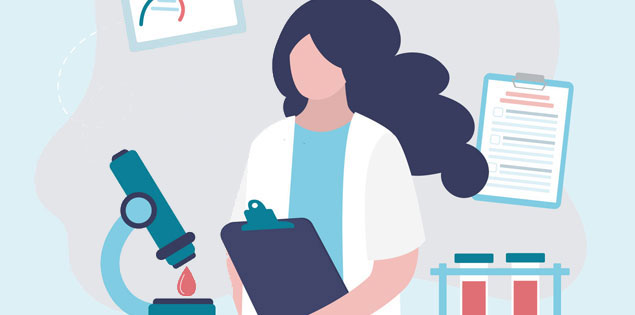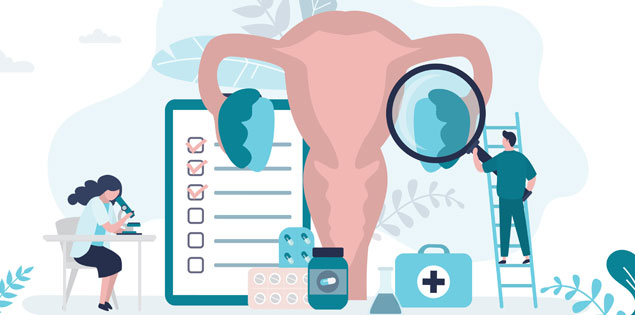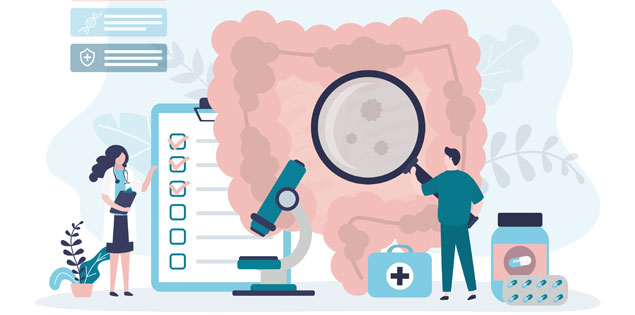Screening

What screening entails
According to estimates by the International Agency for Research on Cancer, the absolute number of new cancer diagnoses will increase between 2020 and 2040, especially for the most frequent types. According to AIRTUM's I numeri del cancro in Italia 2022 report, 390,700 new cancer cases (excluding skin cancers other than melanoma) are estimated to occur in Italy in 2022. Approximately 40% of them can be prevented by adopting a correct lifestyle and being diagnosed early, i.e. before it manifests clinically.
To ensure equity in access to early diagnosis, the National Health Service has set up three screening programmes: two aimed typically at women (breast and cervical cancer) and one aimed at both men and women (colorectal cancer), a disease that is the second most frequent malignancy in women and the third in men.
If implemented correctly, these programmes make it possible to change the natural history of breast, cervical and colorectal cancer by reducing the risk of falling ill and increasing the chances of early diagnosis, with less invasive and more effective interventions. In fact, screening makes it possible to detect tumours at an early stage or even before their clinical manifestation, offering a better chance of a cure.
Interventions are targeted at people who are generically at risk for these diseases, belonging to specific age groups:
- Mammography screening: intended for women between 50 and 69, with a mammogram every 2 years. Some regions are expanding the range to 45-74, evaluating its effectiveness.
- Cervical cancer screening: Pap-test and HPV-DNA test for women between 25 and 64.
- Colorectal screening: faecal occult blood test for people between 50 and 69, the main tool used in Italian programmes.
How screening programmes work
The programmes follow nationally-standardised protocols and include:
- Active invitation: the health structure invites the person to take the level one test.
- Normal outcome: if the test is normal, the patient is contacted again after two years (breast and colorectum) or after 3-5 years (cervix).
- Suspected or positive outcome: the structure contacts the person within a few days (4-5, varying between regions) for referral to the second level, with follow-up examinations at the regional oncology networks.
To eliminate cervical cancer, it is crucial to enhance the synergy between primary and secondary prevention by increasing HPV vaccination coverage in adolescents of both sexes.
Mammography screening (breast cancer)

The examination consists of a mammogram: the breasts are placed on a plate one at a time and slightly compressed to obtain horizontal and vertical X-rays. The examination is usually not painful and radiation is minimal, therefore safe. If the outcome is suspicious or positive, the person is contacted for further investigation, which may include:
- breast examination
- Detailed mammography and tomosynthesis
- breast ultrasound
- MRI with contrast medium
- needle aspiration or biopsy for cytological or histological examination
Screening della cervice uterina (HPV)

The main tests are the Pap test and the HPV-DNA test:
- Pap-test: offered every 3 years to women between 25 and 64.
- HPV-DNA test: most effective above the age of 30, to be carried out every 5 years. Regions are adopting this model for the 30-64 age group
HPV (human papillomavirus) is widespread: most people come into contact with it at least once in their lifetime. The infection often resolves itself spontaneously in young girls, but in some cases it can cause cervical lesions, which can be detected through screening. If the test is positive, the person is called back for a colposcopy (level two) for the possible treatment of the lesions.
Colorectal screening

The tests used are:
- Faecal occult blood (SOF): main test in Italian programmes.
- Rectosigmoidoscopy: visualisation of the lower part of the intestine using fibre optics.
The occult blood test detects traces of blood invisible to the naked eye and is carried out at home, with no dietary restrictions required. In some regions, the test can also be picked up in pharmacies, thereby improving accessibility.
If the test is positive, the person is called back for a pre-endoscopic examination and colonoscopy (RSCS), with possible removal and analysis of the detected polyps.